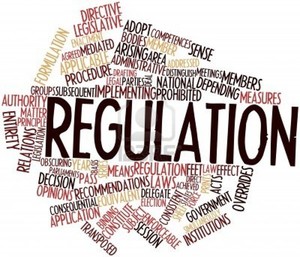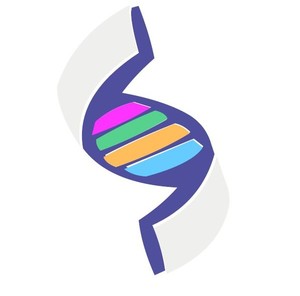Analysis of regulation of biosimilars in the EU concludes that regulation is progressing as more knowledge is gained, which is reflected in the changing nature of regulatory guidelines. The authors conclude that the EU framework generates safe and effective biosimilars [1].
The EU first set up a regulatory framework for biosimilars in 2005 and defines a biosimilar as a ‘biological medicinal product which is similar, but not identical, to a reference biological medicinal product’.
Since 2005, there has been a steady increase in the number of biosimilars approved in the EU. In order to assess trends in biosimilars regulation over this time, a recently published study [1] analysed marketing authorisation applications (MAAs), approved biosimilars, clinical development programmes for biosimilars, and adverse event reports related to biosimilars in the EU.
They found that, since 2005, 12 guidelines have been issued, nine of which were updated in line with new knowledge. Guidelines on the development of biosimilars in the EU have been described as ‘living documents’, as they are continuously revised and updated as necessary.
Up to December 2019, 90 MAAs were submitted to the European Medicines Agency (EMA) and 53 biosimilars were approved (for 14 different classes of biologicals), demonstrating the EU’s increasing experience in regulating biosimilars.
The researchers’ review of European public assessment reports (EPARs) found that product-specific guidelines were generally followed by applicants. In cases where deviations from the guidelines occurred, approval was still granted if the overall application demonstrated biosimilarity.
A review of clinical development programmes found that the average number of phase I clinical trials was generally higher than phase III trials, excluding for biosimilars approved in 2016 (in which the number of phase I and III trials were the same).
Phase I trials mainly involved healthy volunteers. However, exceptions to this trend were observed in the clinical development of biosimilars of rituximab, insulin glargine and infliximab.
In some cases, e.g. clinical development programmes of bevacizumab, etanercept and trastuzumab, the researchers observed that only healthy male volunteers were enrolled. Under-representation of women in clinical trials is a well-known issue, they say, related to the fact that women have childbearing potential and drugs may have unknown side effects on the fetus.
In some cases, clinical development programmes consisted of only phase I clinical trials, without phase III studies, such as for certain pegfilgrastim biosimilars. However, approval in such cases was dependent on adequate scientific justification of the absence of phase III studies, as well as scientific advice being sought during development.
In terms of safety, analysis of disproportionate adverse event reports identified no new safety concerns, indicating that biosimilars are well tolerated. Results from the analysis of Medical Dictionary for Regulatory Activities (MedDRA) also suggested a high degree of similarity in the safety profile of originators and their biosimilars.
The authors summarize that the EU defines therapeutic equivalence through pharmacokinetic/pharmacodynamic (PK/PD) endpoints, extrapolation, PD markers and PK reliance. They say this integrated way of demonstrating biosimilarity reduces the number of clinical trials needed and may shorten clinical development timelines, accelerating access to medicinal products for patients.
They also commend the process of offering scientific advice, which they say is a useful tool that allows applicants to discuss their development strategies with the regulator.
The authors conclude that clinical development programmes of biosimilars and approval requirements for biosimilars are changing over time in the EU, as guidelines are constantly being updated to reflect new knowledge. Ultimately, their analysis indicates that the EU framework results in quality, safe and efficacious biosimilars.
Conflict of interest
The authors of the paper [1] declare no conflict of interest.
Editor’s comment
Readers interested to learn more about European markets are invited to visit www.gabi-journal.net to view the following manuscripts published in GaBI Journal:
The European framework for intellectual property rights for biological medicines
European prescribers’ attitudes and beliefs on biologicals prescribing and automatic substitution
Biosimilars markets: US and EU compared
GaBI Journal is indexed in Embase, Scopus, Emerging Sources Citation Index and more.
Readers interested in contributing a research or perspective paper to GaBI Journal – an independent, peer reviewed academic journal – please submit your manuscript here.
GaBI Journal Citation Impact
1.9 – CiteScore 2020 (calculated on 5 May 2021)
2.0 – CiteScoreTracker 2021 (Last updated on 5 October 2021)
Submit a manuscript to GaBI Journal
Related articles
CuraTeQ submits application to EMA for pegfilgrastim biosimilar
EMA recommends approval of two adalimumab
Competition from biosimilars drives price reductions for biologicals in France
| LATIN AMERICAN FORUM The new section of the ‘Latin American Forum’ on GaBI has been launched. The objective of this new section is to provide you with all the latest news and updates on developments of generic and biosimilar medicines in Latin America in Spanish. View last week’s headline article: Los datos apoyan la intercambiabilidad de los biosimilares de la UE Browse the news in the Latin American Forum! Register to receive the GaBI Latin American Forum newsletter. Inform colleagues and friends of this new initiative. LATIN AMERICAN FORUM Se ha lanzado la nueva sección del ‘Foro Latinoamericano’ sobre GaBI. El objetivo de esta nueva sección es brindarle las últimas noticias y actualizaciones sobre desarrollos de medicamentos genéricos y biosimilares en América Latina en español. Vea el artículo principal de la semana pasada: Los datos apoyan la intercambiabilidad de los biosimilares de la UE Explore las noticias en el Foro Latinoamericano! Regístrese para recibir el boletín informativo GaBI Foro Latinoamericano. Informe a colegas y amigos sobre esta nueva iniciativa.
|
Reference
1. Zuccarelli M, Micallef B, Cilia M, et al. The EU regulatory network and emerging trends – a review of quality, safety and clinical development programmes. Generics and Biosimilars Initiative Journal (GaBI Journal). 2021;10(2):83-99. doi:10.5639/gabij.2021.1002.009
Permission granted to reproduce for personal and non-commercial use only. All other reproduction, copy or reprinting of all or part of any ‘Content’ found on this website is strictly prohibited without the prior consent of the publisher. Contact the publisher to obtain permission before redistributing.
Copyright – Unless otherwise stated all contents of this website are © 2021 Pro Pharma Communications International. All Rights Reserved.








 0
0











Post your comment